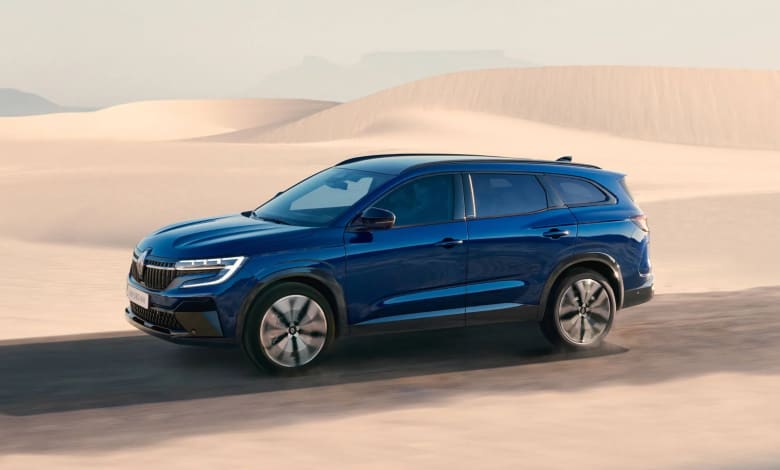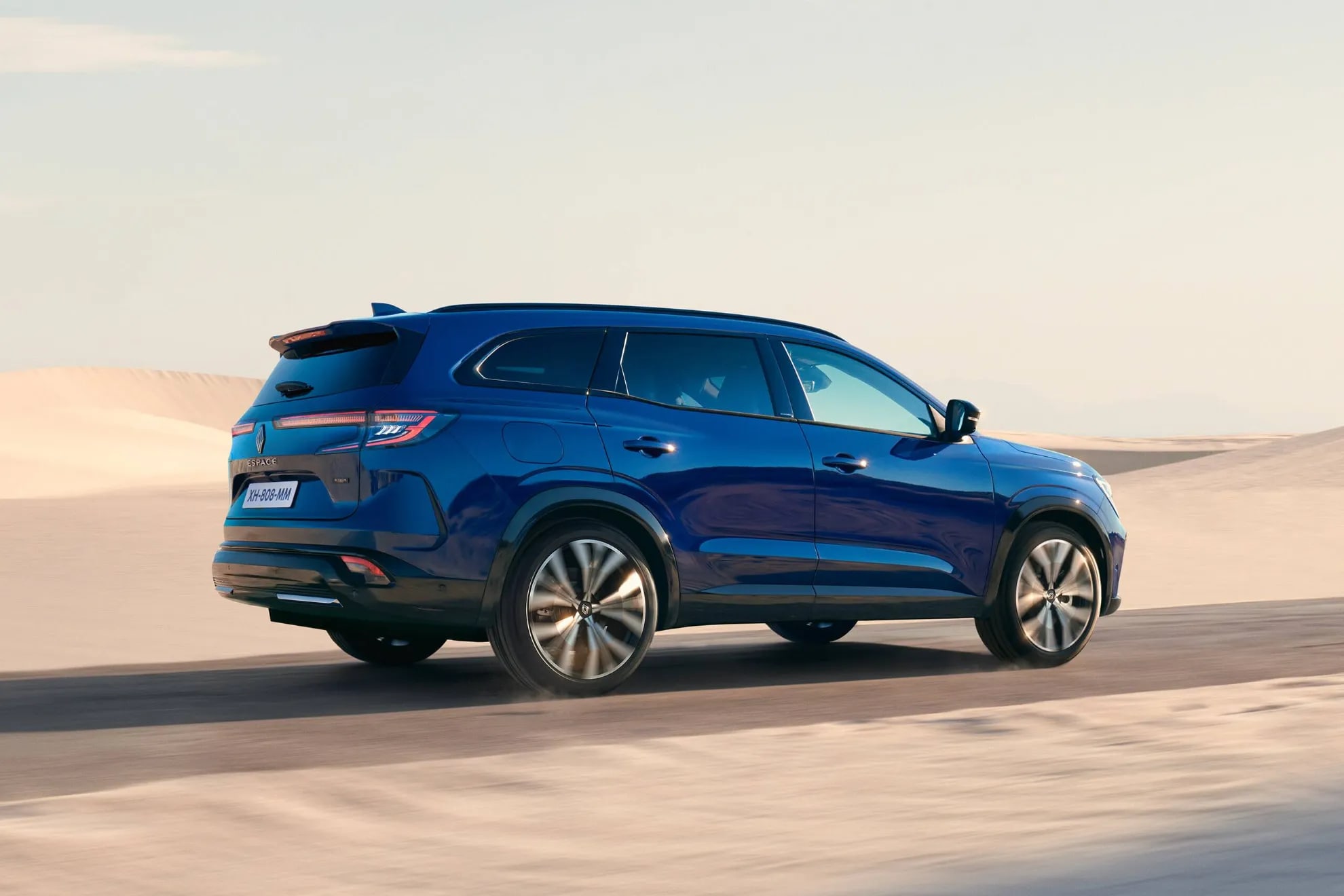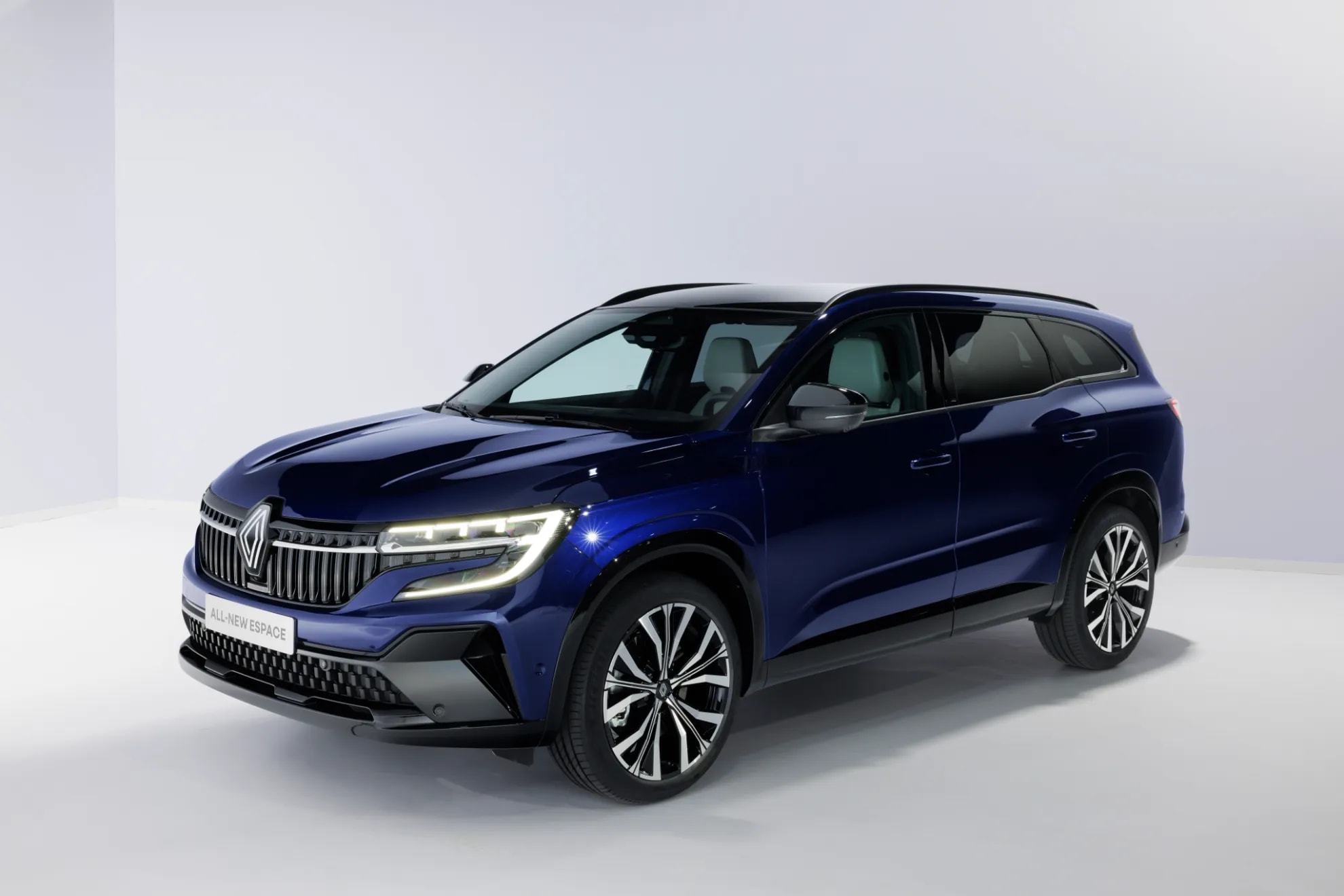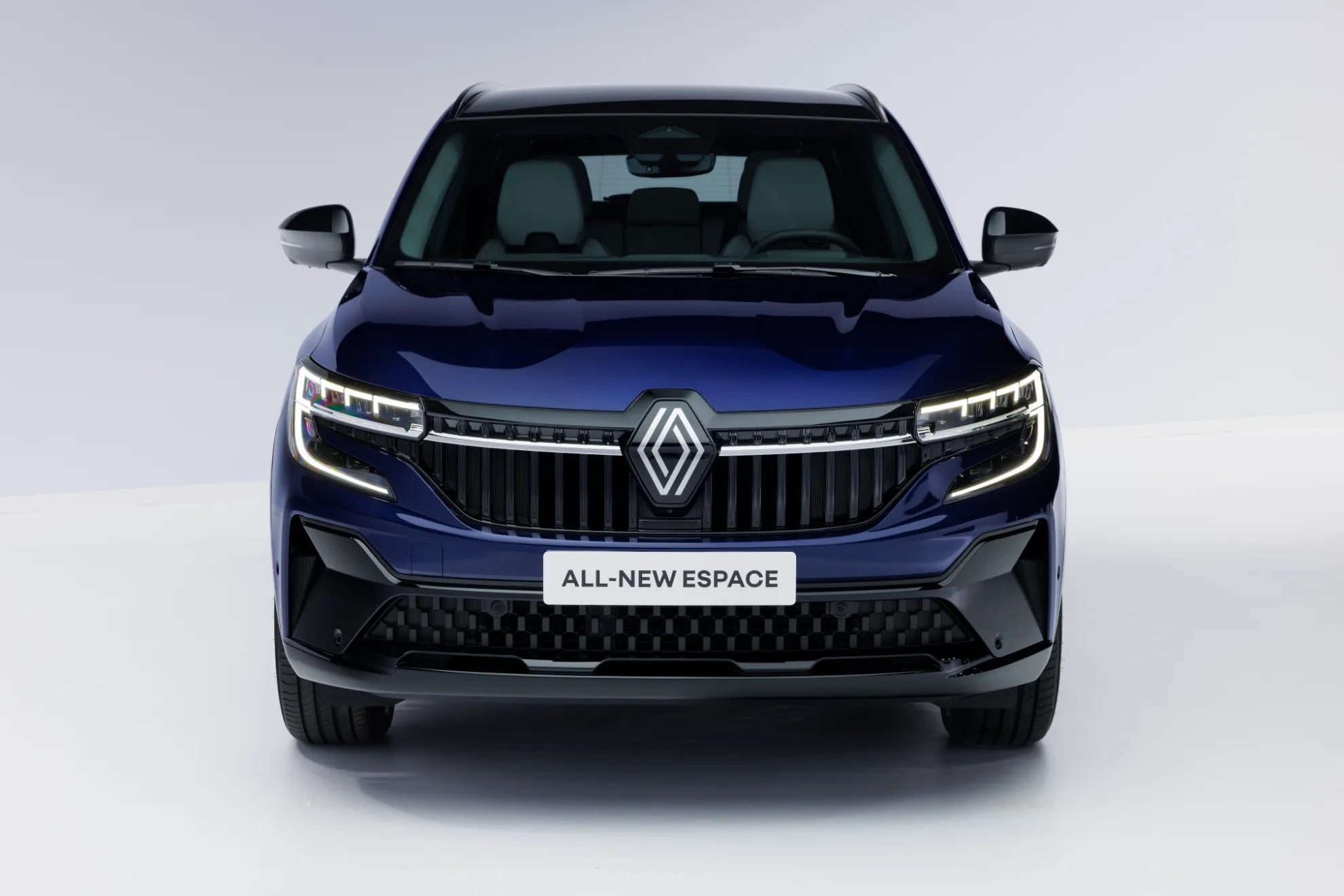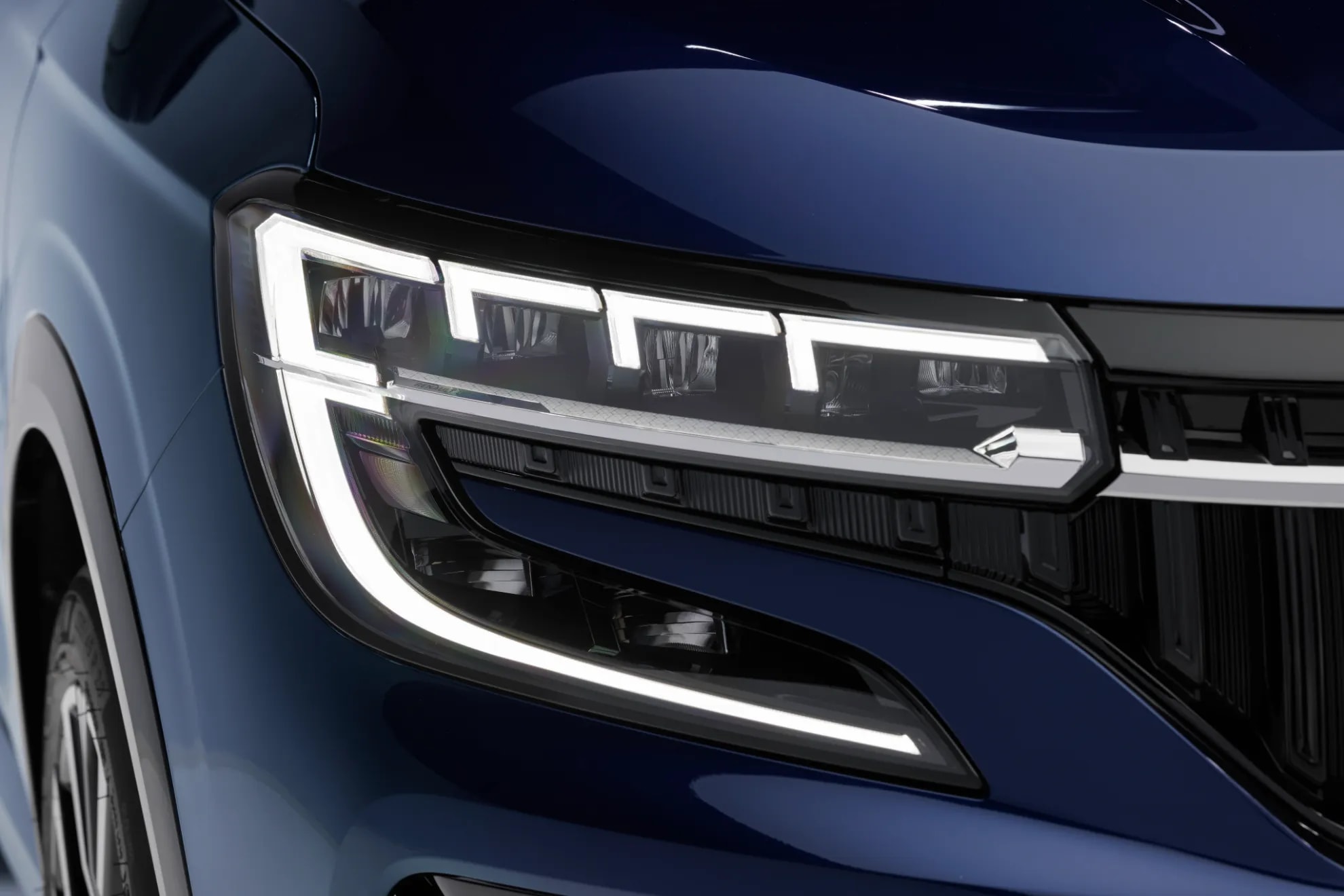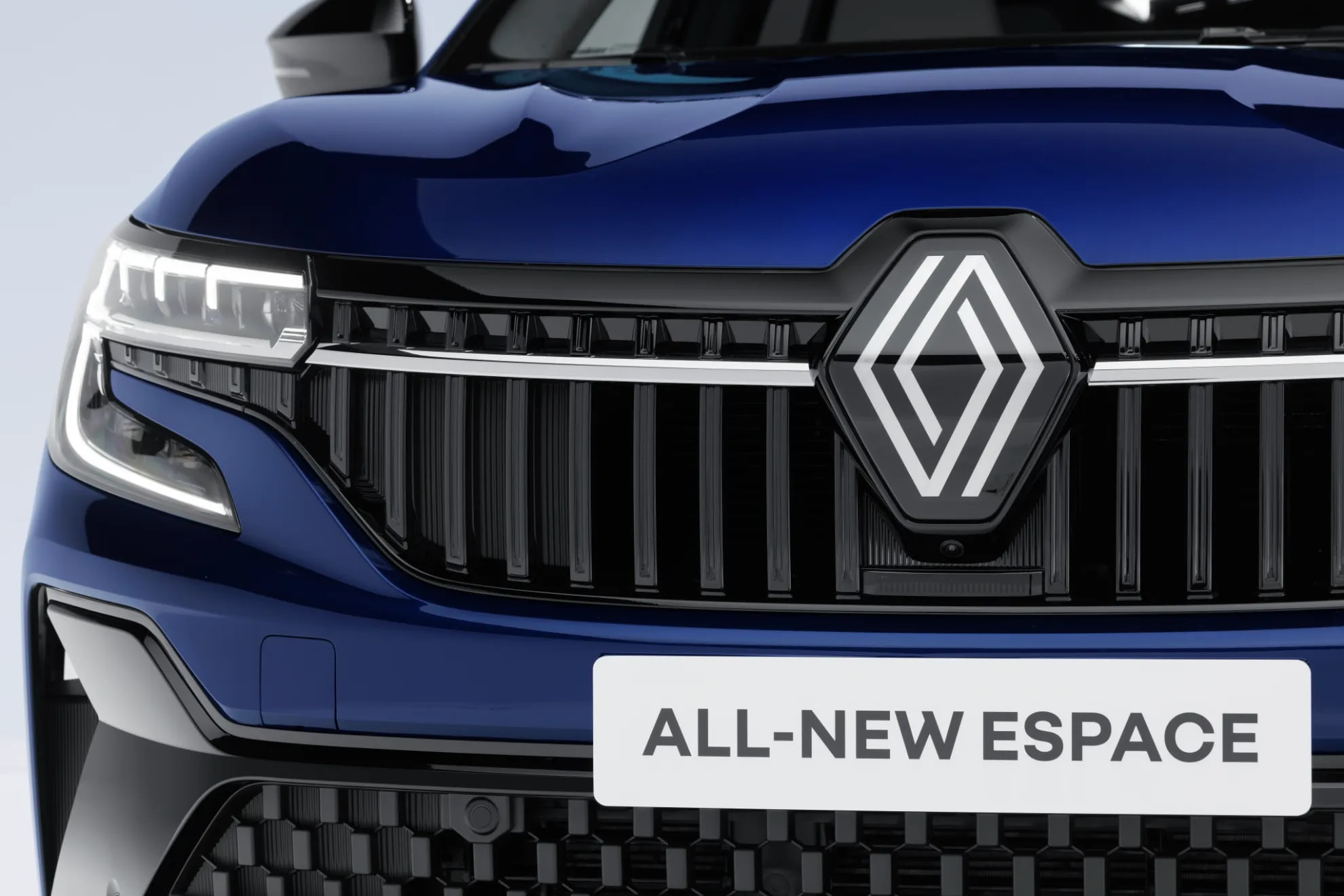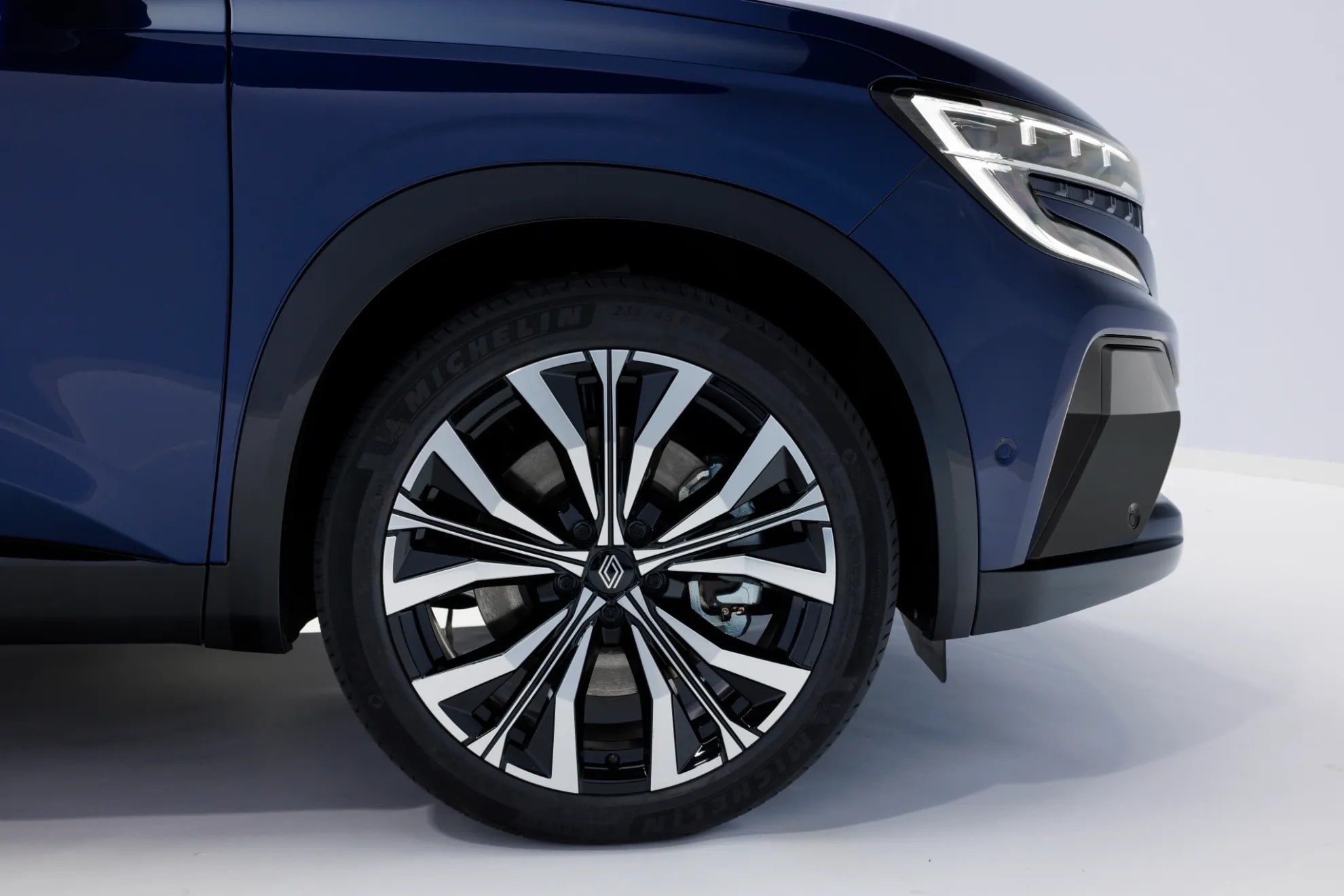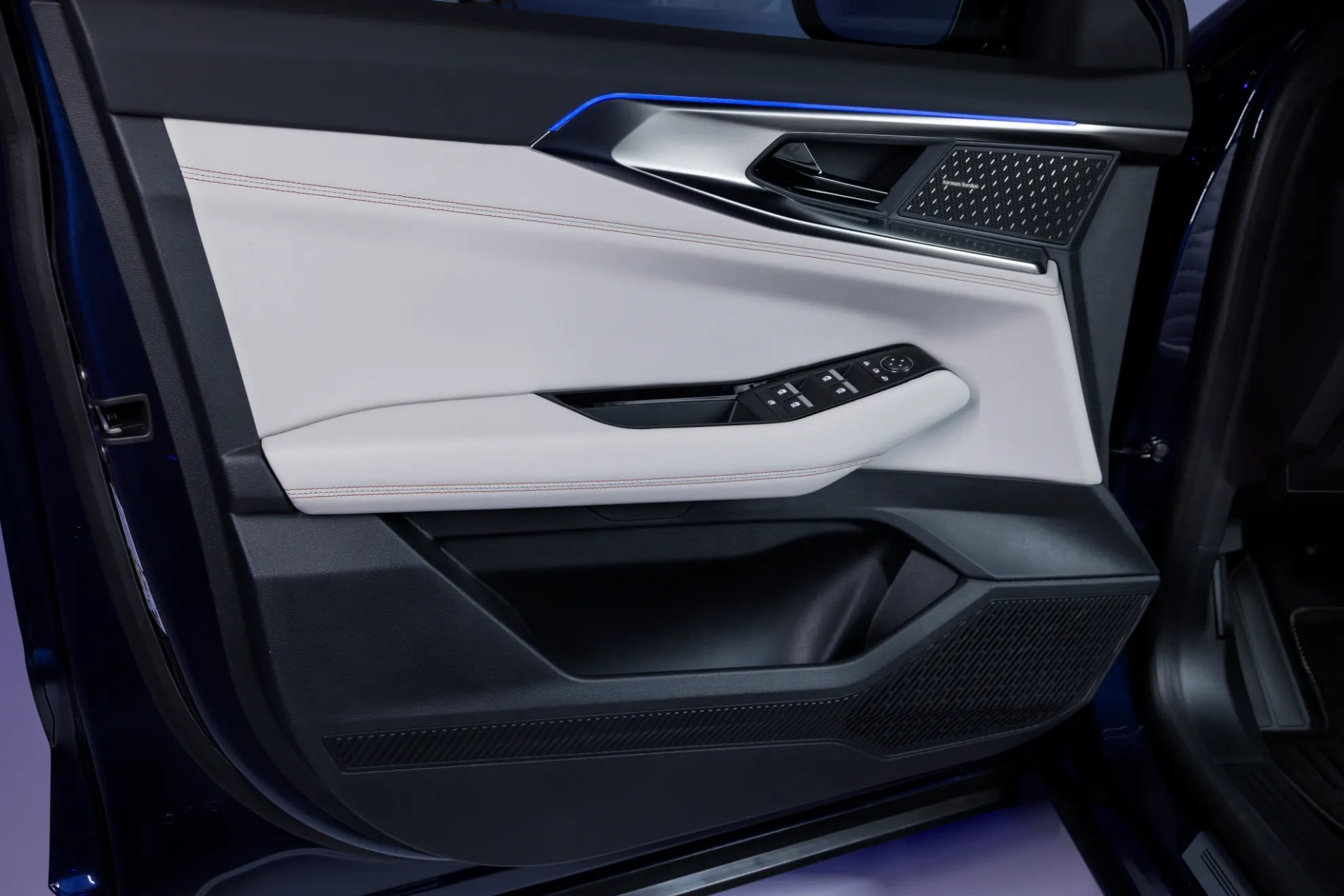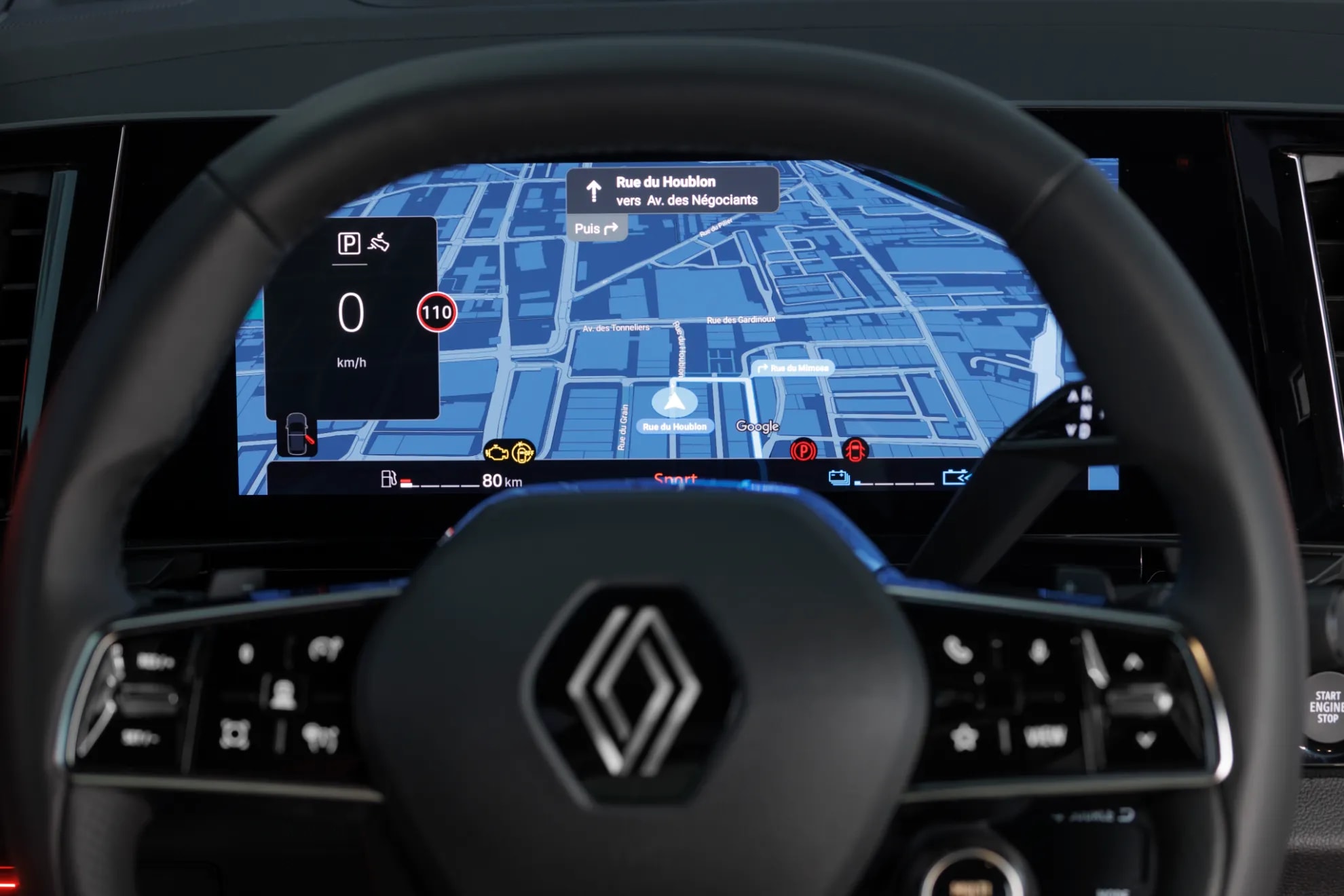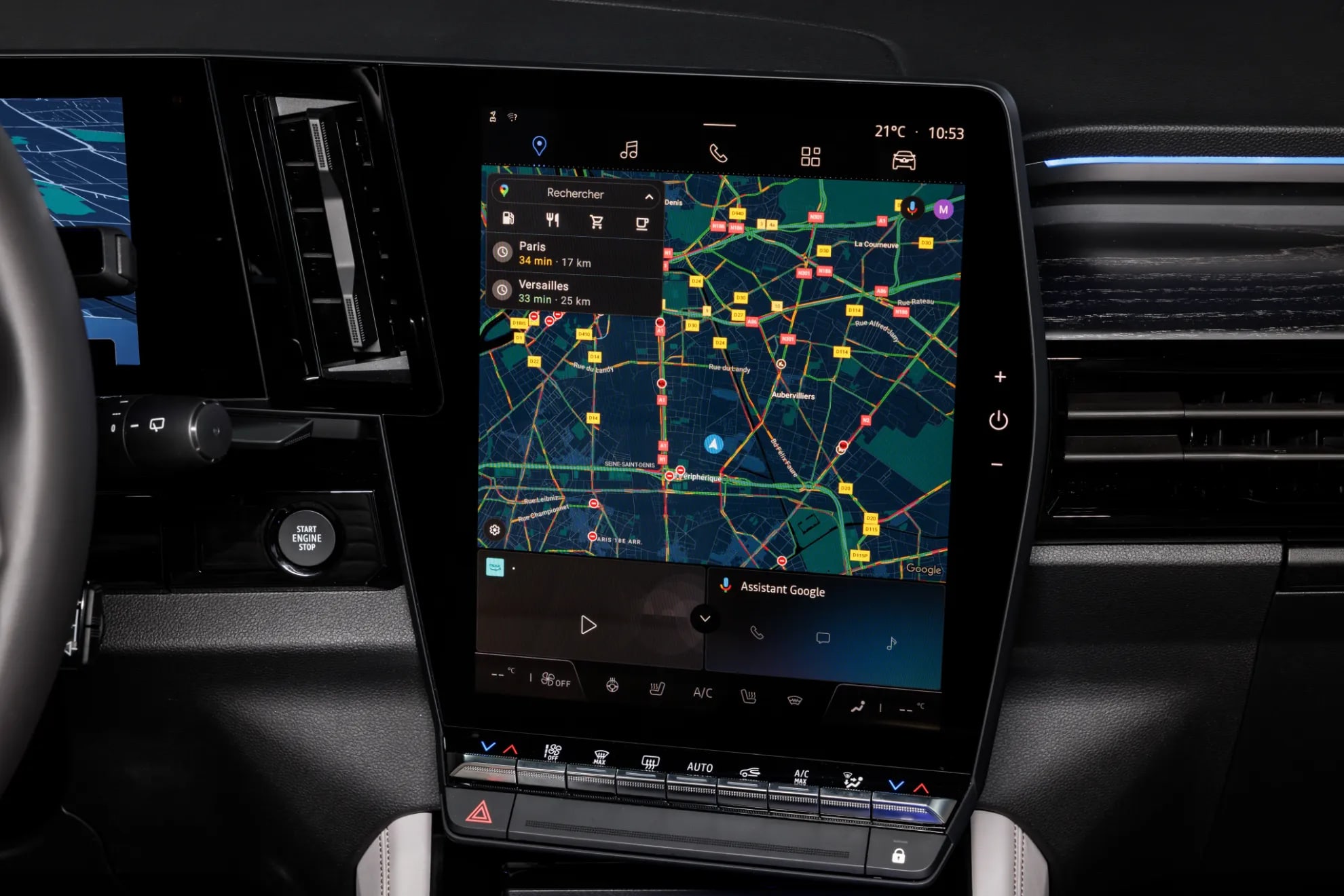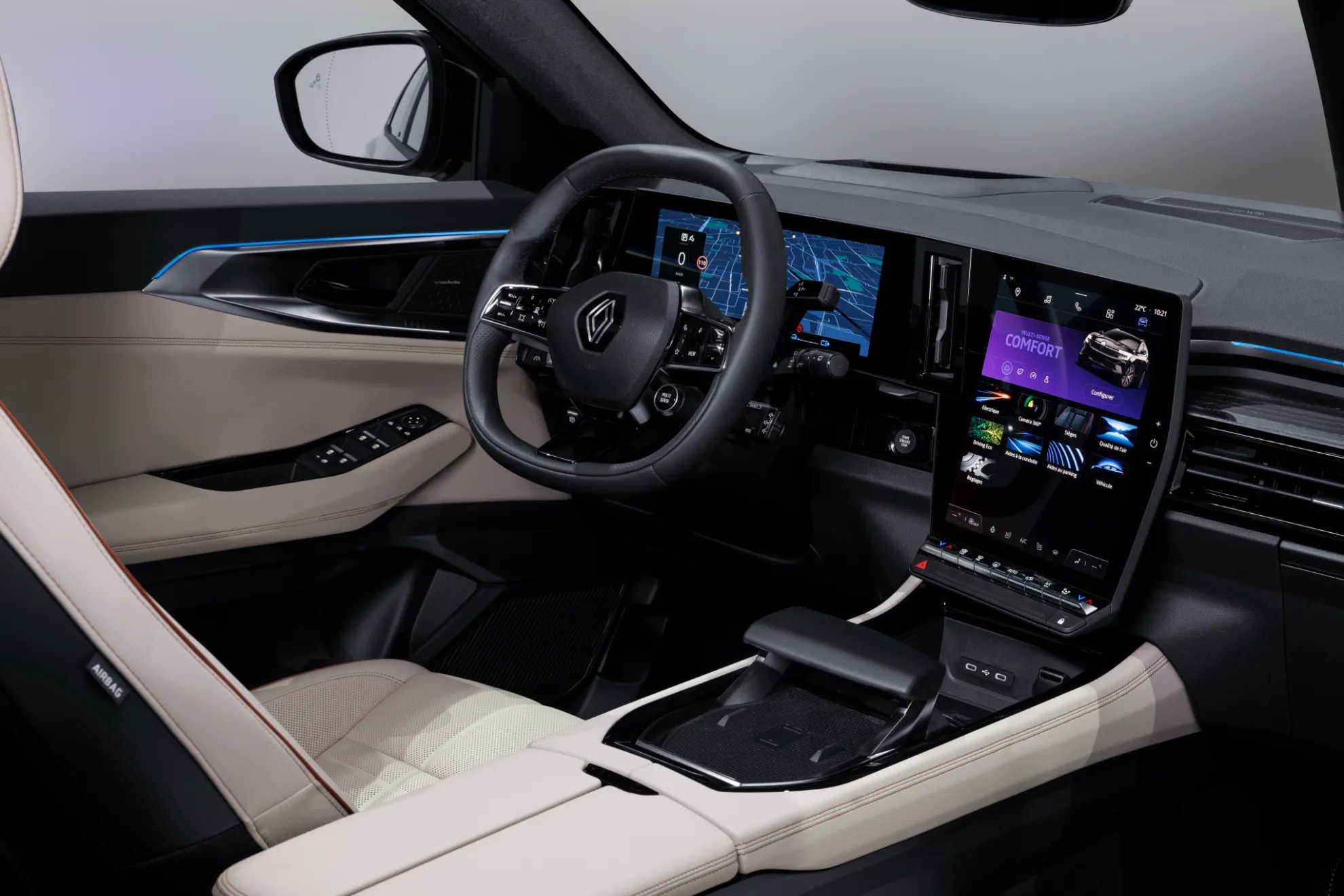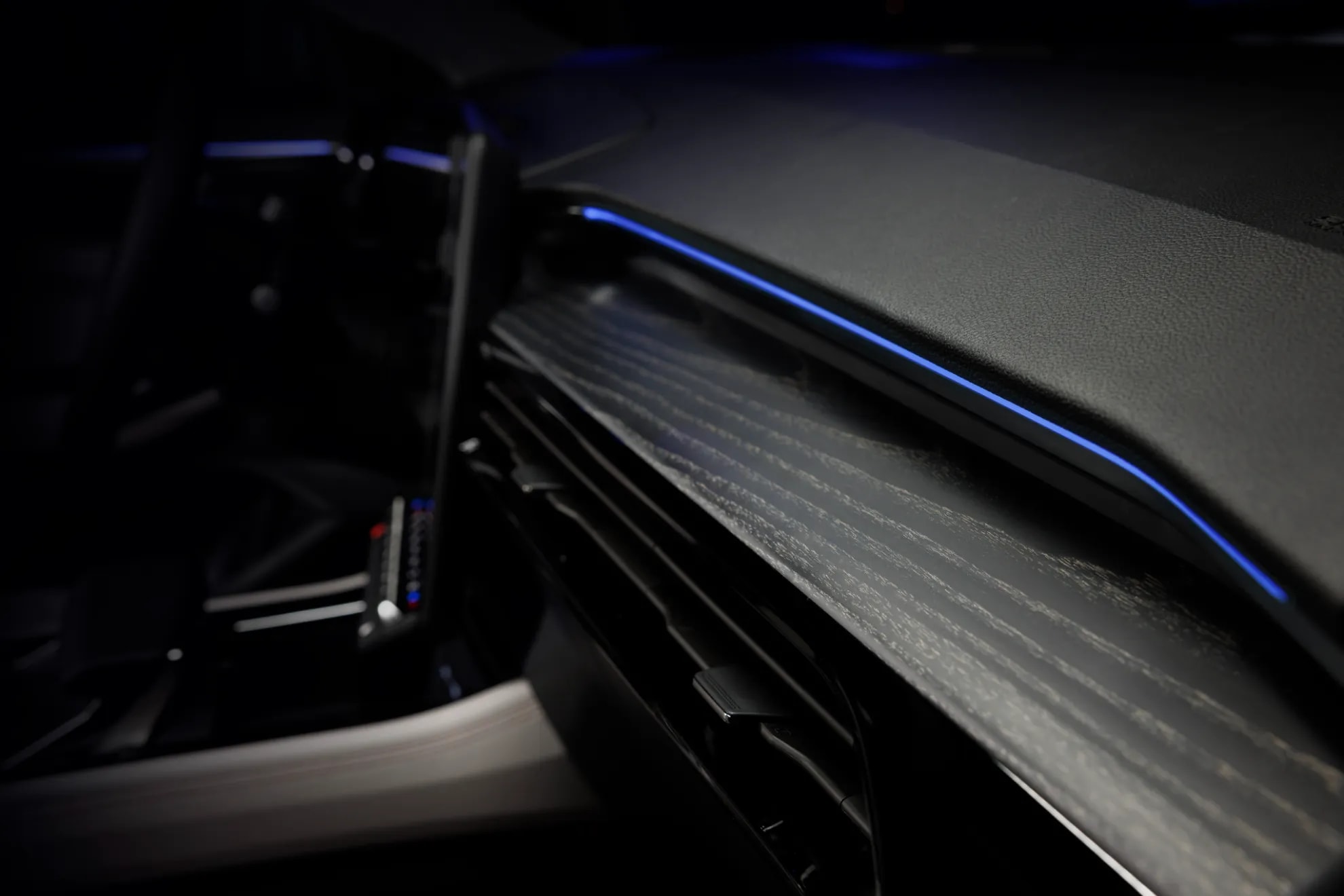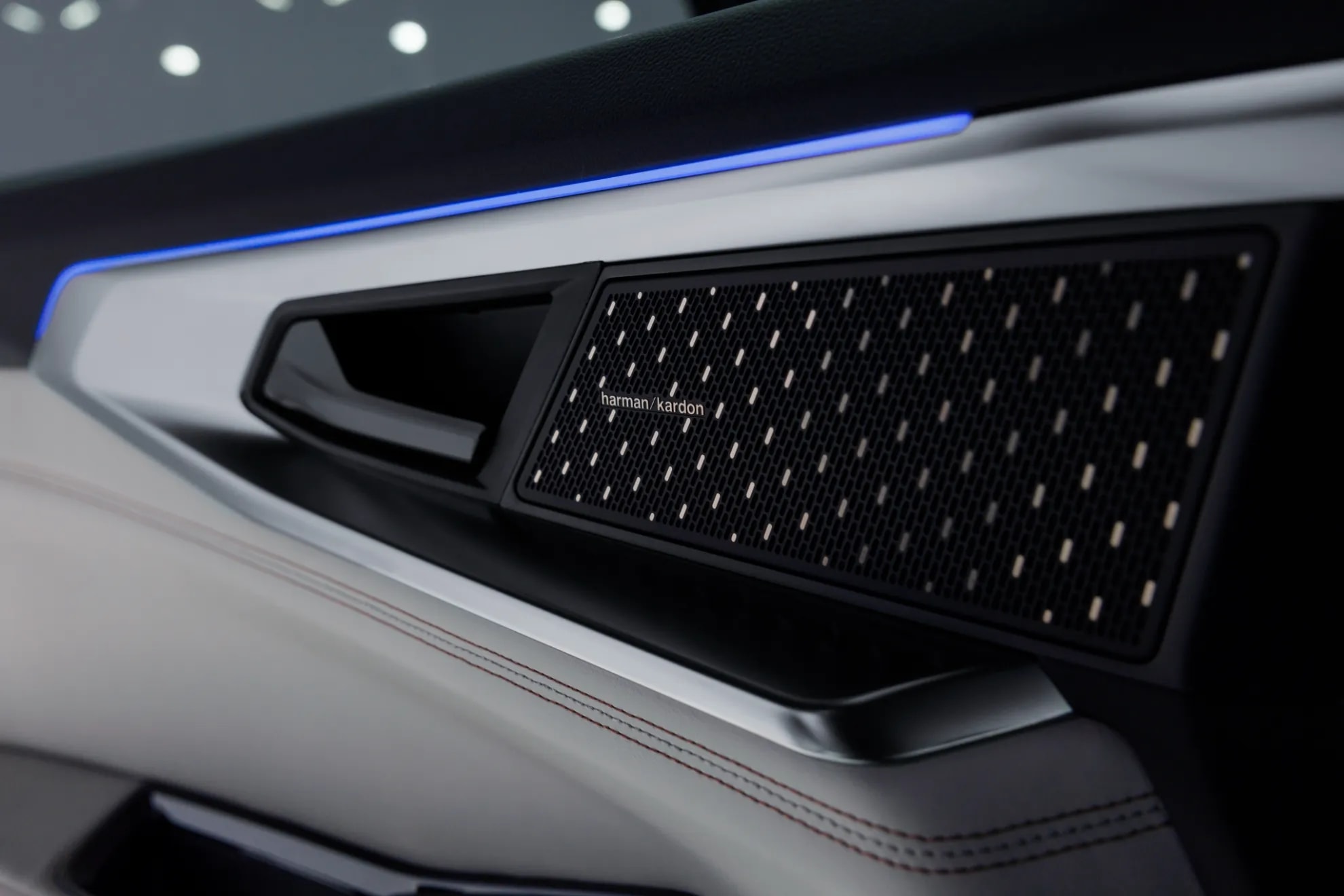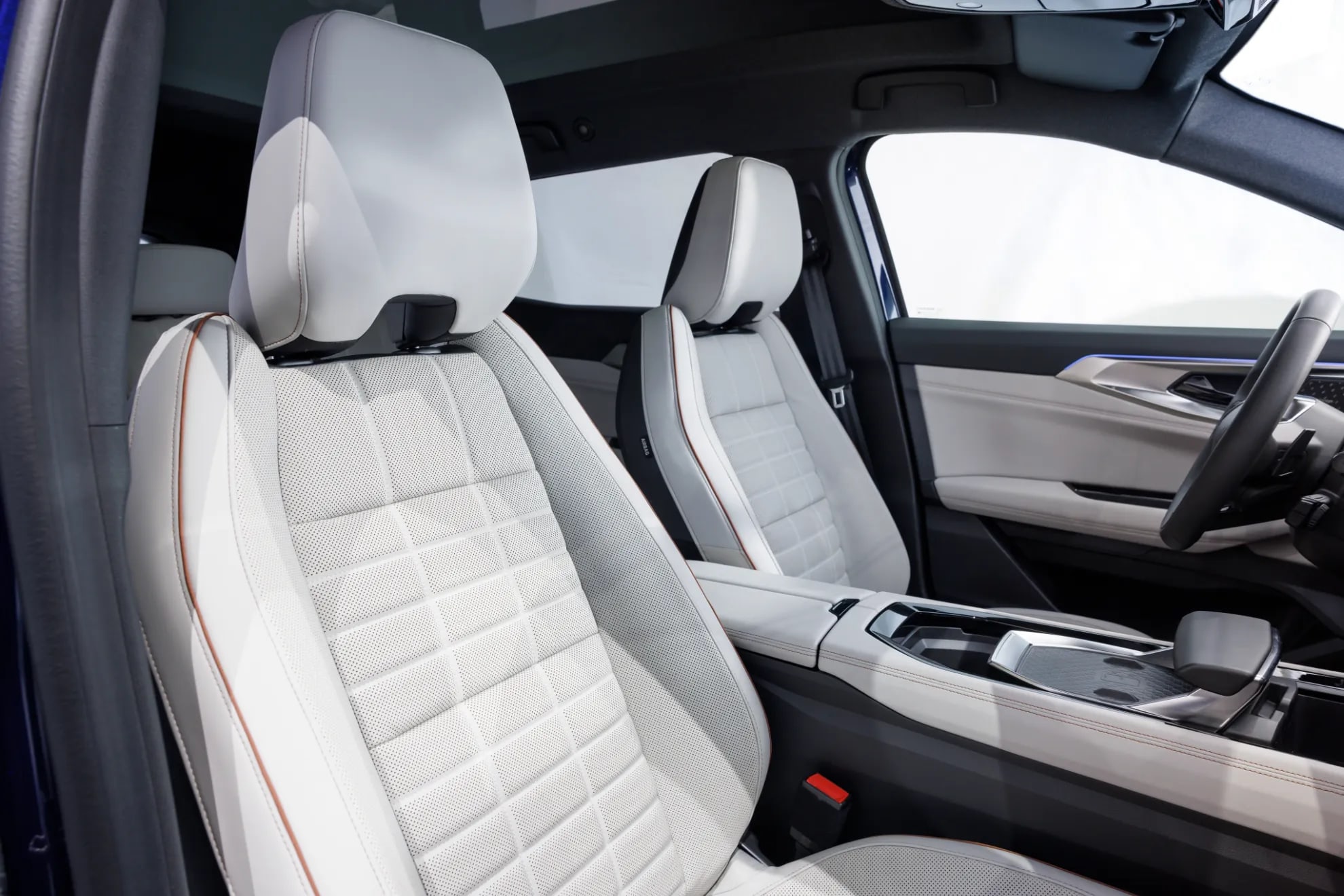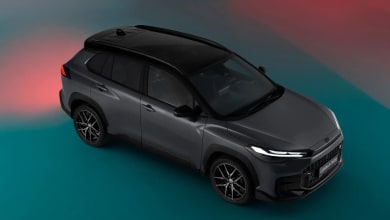Renault launched the first generation Espace exactly 40 years ago in 1983. It was one of the first car experiments dedicated to large families in France and Europe. The first model had a design inspired by high-speed trains TGV and was a great success, with over 200,000 units sold.
Today, four decades after its launch, Renault Espace is reinventing itself as an SUV with seven seats. The new model is shorter than its predecessor but offers class-leading legroom and plenty of practicality inside the cabin. The new Renault Espace can be easily confused with its smaller brother, Austral, on whose platform it is developed. The new model has a height lower by 3 centimeters but has a much more generous ground clearance of 18 centimeters.
As mentioned, the new Espace is 14 centimeters shorter than the old model but still promises space for 7 passengers. From the profile, it is clear that it is a much longer Austral (about 20 centimeters longer), which also has a different roofline. The aesthetic package is completed by the standard 19-inch rims offered. Optionally, customers can choose 20-inch rims with two-tone colors. The rear is aligned with Renault’s design philosophy, with stop lights that almost merge at the Renault logo. The lower part of the spoiler comes with a plastic protection that adds to the SUV feeling of the new Espace.
The aesthetic touches become personalized when you choose one of the two top trim levels, Iconic or Esprit Alpine.
Interior space
In order to transport 7 passengers in comfortable conditions, some compromises are needed. I’m referring to the fact that if those on the second row don’t slide their seats at least 10 centimeters, it will be difficult for someone to get in on the last row. The headroom is decent, but legroom is almost non-existent.
Fortunately, passengers on the second row have a huge knee space.
There are 32 centimeters for their disposal, so they can ‘gift’ some centimeters to make room for both those on the third row and their legs.
Access to the third row of seats is easy because the second-row bench slides quickly and over a distance of 26 centimeters, however, to be honest, i’m not sure if any adult would like to sit in the third row.
In the third seats area you’ll find two USB C sockets, ventilation grilles, courtesy lights and even Harman Kardon speakers.
The space in the trunk is very generous if you choose to use only 5 seats. There are 777 liters. It drops to 159 liters if you use all 7 seats.
Inside the cabin there are many storage spaces, totaling 39 liters. You will enjoy the huge spaces in the doors, the 6-liter glove compartment and the central console, which hides two generous spaces: one under the hand rest and one under the double-opening armrest.
By the way, Renault offers the version with 7 seats for free! That means you decide whether you want 5 or 7. The money you pay is, well… the same.
Technology
Currently, Renault has one of the most technologically advanced interiors in the world.
The multimedia system, developed in collaboration with Google, is impressive.
It’s on par and even better than some premium manufacturers with a tradition: Audi, Lexus, Volvo.
The processor runs fantastically well, you have satellite navigation and access to around 30 applications, including Google Maps and Google Play.
You also have the possibility of using Apple CarPlay and Android Auto wirelessly.
The central screen is 12 inches, positioned vertically, and has a resolution of 1250×1562 pixels.
As for the dashboard, it also has a 12.3-inch screen with a resolution of 1920×720 pixels, honoring the driver with impeccable graphics and well-structured information.
The Head-Up Display comes in a size of over 9 inches, it’s colorful and displays and essential information.
The old Espace had a huge panoramic roof. We can find it here as well. It has a surface area of one square meter (1.33 x 0.84 meters) and has a UV filter. This stops the sunlight, repels the heat, and you no longer need a retractable sun visor.
The ambiance in the cabin is brought to life by the LED ambient lighting, available in 48 colors that can be changed every 30 minutes to follow the circadian cycle, meaning the moments of the day (morning, noon, evening). The optional list also includes the Harman Kardon system with 12 speakers and the 360-degree camera with car projection.
Powertrain
Well, there’s are too many options available here.
Currently, there is only one powertrain, which is similar to the one found on the Austral. This is why the letter “e” at the end of the Espace name on the hatchback is blue.
The hybrid system consists of a 1.2-liter three-cylinder gasoline engine that delivers 130 horsepower and is assisted by two electric motors. One motor provides 70 horsepower, while the other operates as a starter generator and has 25 horsepower. The equation also includes a 2 kWh lithium-ion battery and a multimodal gearbox that Renault has patented. Overall, the car promises no less than 200 horsepower.
With this recipe, the Renault Espace promises to be able to operate completely electrically for 80% of the time in the city. Furthermore, the recorded fuel consumption will be 40% lower than that of a classic gasoline car. This was demonstrated in a test with the Renault Austral, which used the same hybrid powertrain.
The French manufacturer promises an average fuel consumption of 4.6 liters and a total range of 1,100 kilometers on a full tank of fuel.
To further optimize the driving experience, it’s recommended to use the navigation system, as the car will adapt its electric driving mode even better in urban environments.
Rear-wheel steering and suspensions
Renault was among the first manufacturers to introduce rear-wheel steering, a system you already know as 4Control. In the case of the Espace, we’re talking about rear-wheel steering at a 5-degree angle opposite to the front wheels to shorten the turning radius. The Espace ends up with a turning radius of only 10.5 meters, similar to that of a Clio. Beyond 50 km/h, the rear-wheel steering is in the same direction as the front wheels. It’s not much, but you’ll probably feel it.
The package that influences the handling is also the multi-link suspension dedicated to the rear axle. It will help the car perform better on corners. Otherwise, it will rely on the 8.8 seconds to reach 100 km/h in a straight line. The maximum speed is not that impressive because it stops at 175 km/h.
Final words
In conclusion, the Renault Espace has undergone a radical change. You decide if you like it as an SUV or not.

